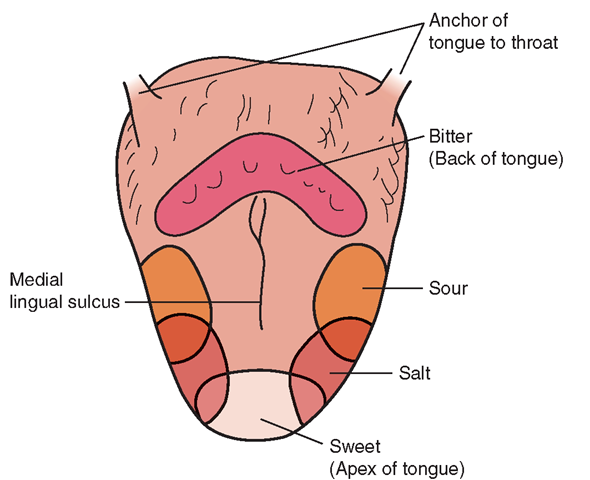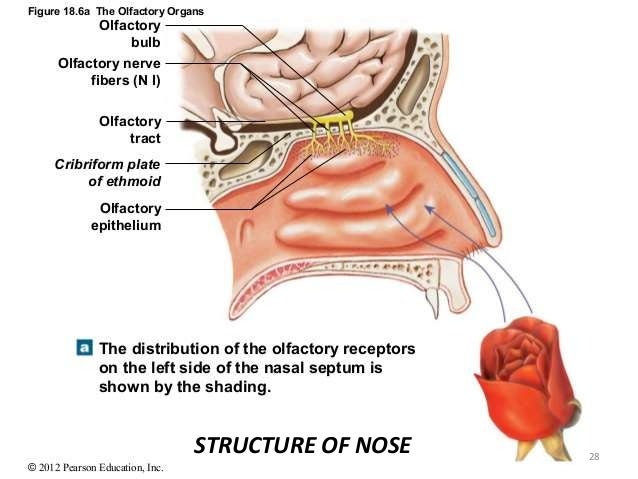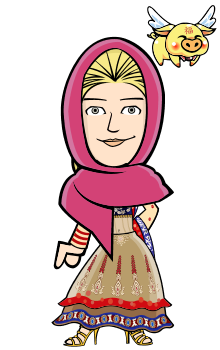Hello fellows,
The post is about the human nervous system, as I said in my previous blog that I will write a topic which I can write easily, so here it is.
The Human's Nervous System

Photo Credit: by Wikipedia
The Main Points of the Blogpost are;
-
The Nervous System consists of the brain, the spinal cord and the nerves.
-
The Brain is the control centre of the human body. The spinal cord controls our reflex actions.
-
Reflex actions are automatic actions. We do not have to think before doing them.
-
The three parts of the brain are the cerebrum, the cerebellum and the medulla.
Video Credits: by qprmarsh via YouTube
The Human's Nervous System:
Our nervous system is consists of the brain, the spinal cord and the nerves. The nervous system is ever busy, controlling all the other systems of our body.
Nerves from the region of the head and the neck join the brain directly whereas nerves from the other parts of the body join each side of the spinal cord which leads to the brain.
Nerves:
There are three kinds of nerves, sensory nerves, motor nerves, and mixed nerves.

Photo Credit: Generic + Look.com
i) The Sensory Nerves:
The nerves which are connected to the sense organs and bring a message from the sense organs to the brain or the spinal cord are called “Sensory Nerves”.
ii) The Motor Nerves:
Carry ‘orders’ from the brain or the spinal cord to the muscles or glands.
iii) The Mixed Nerves:
Carry “messages” to the brain as well as bring “orders” from the brain.

Photo Credit: By Antranik Via Antranik.org
The Nervous System controls our actions. Some of our actions are automatic. We do not have to think before ‘doing’ them. These are called “Reflex Actions”. Such actions are controlled by the spinal cord. For example, when our finger comes too close to a hot object, the sensory nerves quickly pass a message to the spinal cord.
The spinal cord immediately sends orders through the motor nerves for the muscles to tighten up. The hand jerks away from the hot object even before we feel the pain. Blinking of the eyes and watering of the mouth are two other examples of reflex actions.
How are messages sent and received?
On touching a hot object, the nerves send a message to the spinal cord and the spinal cord orders the finger to withdraw.

Photo Credit: Encyclopædia Britannica, Inc
The spinal cord extends from the base of the brain to almost the lower end of the backbone. It is enclosed inside a tough, bony but flexible spine. It joins the rest of the body to the brain by means of nerves.
The Brain (The Human Brain):
The brain is the control center of the human body. It receives information from all parts of the body through different nerves. It is protected by a hard, bony skull. The space between the skull and the brain and also the inside of the brain is filled with a clear fluid which serves as a cushion against jerks and injuries.
Our brain is made of three different parts, each part having its own work to do.

Photo Credit: by saboughey Via Blogpost
The largest part of the brain is the CEREBRUM. Its dome-shaped surface is covered with deep ridges and grooves. It controls our eyes, ears, voice, nose, and tongue. It is the center of our intelligence. We can think, learn, remember and reason because of our cerebrum.
Below the cerebrum is the “Cerebellum”. It coordinates the actions of the muscles, making them work together. It helps us in the balancing our body and keeping us in an upright posture.
Malfunctioning of this part can make our movement jerky. Beneath the cerebellum lies the bulb-shaped MEDULLA, connecting the brain to the spinal cord. It controls the involuntary action like movements of the lungs and the heart. The medulla is active even when we sleep.
The brain needs a continuous supply of blood and oxygen. A person faints when his heart is not able to send enough blood to the brain. We must get enough sleep to give rest to our brain.
The Sense Organs:
The Organs connecting us to the outside world through our senses are known as the sense organs, the eyes, ears, skin, nose, and tongue are the sense organs.
The Eyes:
The eyes are our most important sense organs. Each eye ball is safely set in a deep bony socket and is further protected by the eyelids and the eyelashes.

Photo Credit: Biology Science is Cool
These help to keep dust and dirt out of our eyes. The colored circle in the eye is IRIS. The pupil which looks like a spot is actually an opening through which light enters. The eye is joined to the brain with the help of a sensory nerve called the “Optic Nerve”.
How to care for your Eyes?
As we know the Eyes are the important sense organ so we must try to avoid any kind of injury to our eyes. We all should remember these rules;
1- Wash and clean your eyes regularly with cold water.
2- Do not work in a dim light or very bright light. This tired the eyes. Let the light fall on the left side of the reading material.
3- Do not read in a moving vehicle. It strains the eyes.
4- Always sit at least six feet away from the television set.
5- Do not read while lying down. Sit erect and hold the book about 12 inches away from your eyes.
6- Never rub your eye with a dirty towel or dirty hands. This can cause infection. Do not use anyone else’s towel or handkerchief if you have an eye infection.
7- Tell your teacher if you cannot read what is on the blackboard.
The Tongue:
The main organ of taste is the tongue. The surface of the tongue is covered with tiny bumps. Inside these bumps, there are some special cells called “Tasty Buds” The nerve endings in the taste buds detect four major tastes sweet, salty, sour and bitter. Food tastes better when we can smell it. When a cold block our nose, food does not taste so good.

Photo Credit: What-When-How
The Ears:
Our ears enable us to hear the sounds and to keep our balance. The outer ear helps us to catch and direct sound waves to the inner ear.

Photo Credit: IS2 Chapel
How to Care for our Ears?
Ears can be damaged by very loud noises.
1- Do not clean your ears with a matchstick or hairpin. It may injure the eardrum inside.
2- Use a clean towel to dry your ears. Do not let water enter your ears.
3- Consult a doctor in case of an earache.
The Nose:
The organs of the taste are in the uppermost part of the nose. The sense of taste and the sense of smell are linked together.

Photo Credit: By Rabiya Siddiq Via Slide Share In
How to Care of our Nose?
1- Keep your nostrils clean by blowing our nose gently.
2- The hair inside the nose used to filter the dust from the air, so breathe through your nose.
3- Do not pick your nose.
4- Use nasal drops or inhale steam to clear a blocked nose.
Video Credits: by CBSE Via YouTube
The Skin:
The skin forms a covering for the entire body surface, protecting the internal organs. It is through our skin that we can feel the sensation of touch, heat, pain or pressure. The pores on the surface of the skin allow some body wastes to come out as sweat.

Photo Credit: Scientific Psychic
How to Care for our skin?
1- Soap and water are enough to remove dust and sweat from the skin so never rub it when it’s not needed.
2- Dry yourself thoroughly after washing and wear clean and comfortable clothes. Your clothes should be loose enough to allow in fresh air during warm weather.
3- A scratch or cut on the skin should be treated with an antiseptic to stop the growth of germs.
Both Olive and butter oil are best for our health, take part in this Querlo Survey chat to learn more about them;
So, guys, I hope you like this post too as you liked my previous posts. Your comments help me to improve so please comment, like and share. Thanks.
Regards:
InX_GL



